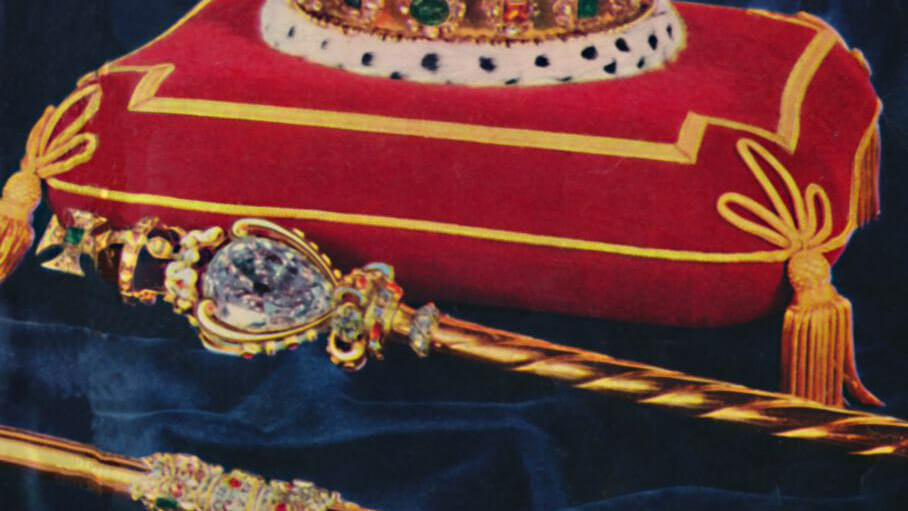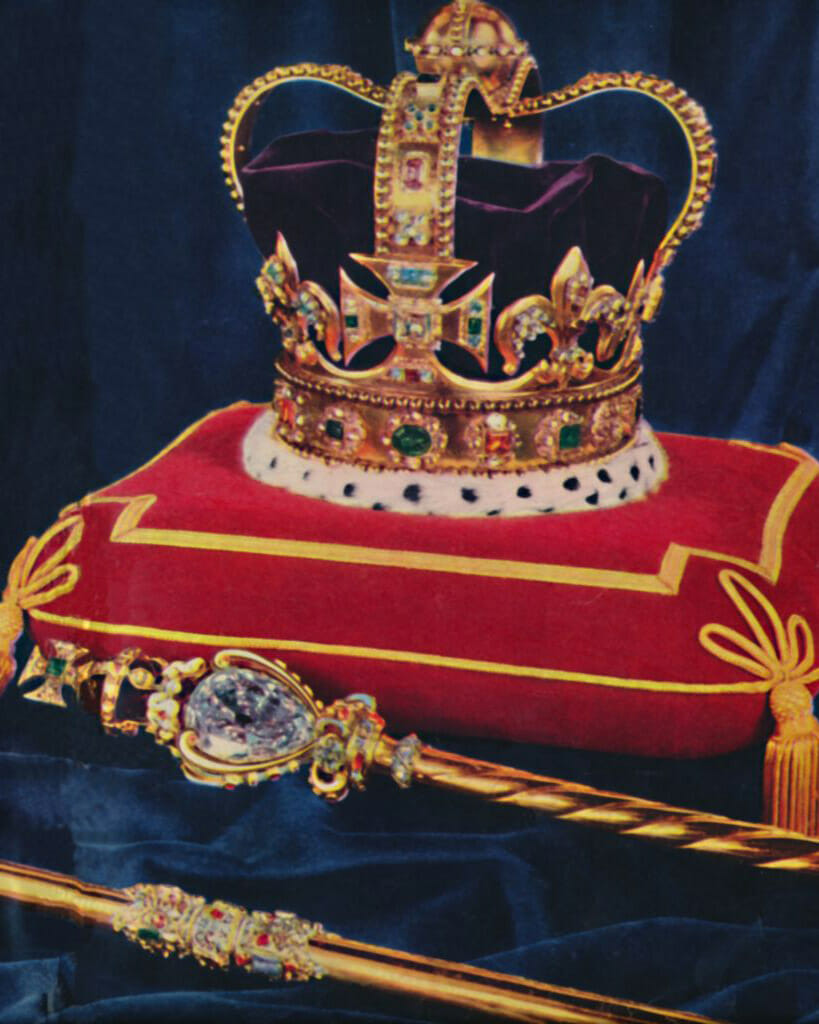Diamond Hall of Fame:
The History of the Star of Africa
A supreme symbol of power, the Cullinan I diamond, also known as the Star of Africa, sits in the Queen’s gold scepter.

What do you do with the world’s largest diamond? When the British Royal family was given the Cullinan I diamond in 1907, which weighed a whopping 3,106.75 carats, they cut it into several stones and strategically placed the biggest one—christened the Star of Africa—in the royal scepter. No image is quite as omnipotent as a king or queen wearing a sparkling crown, holding a jeweled orb and a golden scepter appointed with a 530 carat diamond.
The Star of Africa remains in the British Crown Jewels on display at the Tower of London, where millions of visitors come annually just to see the medieval regalia that has been used in royal ceremonies for centuries.
Read More: Queen Elizabeth II’s Favorite Diamond Jewels
The British tradition of holding a gold and jeweled scepter began with Charles II’s coronation in 1611—and continues today with a redesigned version featuring the mammoth Star of Africa. The diamond scepter underscores the monarchy’s “god given” power, and fittingly represents the Crown, which holds untold riches and power. Following in her father’s footsteps, Queen Elizabeth held the regal diamond scepter at her coronation in 1953, and Prince Charles has waited nearly 70 years (and counting) for his chance to hold the golden staff. If all goes according to plan, the priceless object will next be held by Prince William and Prince George.

Star of Africa: A Monumental
Jewel Fit For a King
As the most important diamond in the British Crown Jewels, the Star of Africa far exceeds the size of the famous Koh-I-Noor which, in comparison, is a mere 105.6 carats and sits in the Queen Mum’s crown. With all these priceless jewels and the extravagant royal pomp and circumstance that come with them, it’s easy to see why people are so obsessed with the royal family, and why The Crown is a top-rated show. The royals’ lives are straight out of a fairytale with diamond crowns and jeweled robes, and they are delightfully entertaining because, in addition to all the pageantry, there’s also scandals in every generation—and the world’s most spectacular jewels are always part of the story.
The Star of Africa is the world’s second largest cut diamond. It is exceeded only by the Golden Jubilee, a 545 carat brown diamond that was discovered in 1985. At 530 carats—larger than a golf ball!—the Star of Africa was a staggering jewel, even for the wealthy King Edward VII.
When the original Cullinan diamond was unearthed in Pretoria’s Premier Mine in 1905, it was so large and exceptional that the inspector Thomas Wells initially thought it was simply a piece of glass. But closer inspection revealed a 1.33 pound colorless diamond—the largest ever discovered. It was named after the mine’s owner, Sir Thomas Cullinan, who discovered the mine deposit in 1902.
The Priceless Stone is Mailed to the King
As with many of the great treasures uncovered on the African continent during colonial rule, the diamond was purchased by the Transvaal government and given to King Edward VII. The story goes that in order to get the much-publicized diamond safely to England, agents spread false rumors that it was being shipped by boat. That ruse distracted any potential thieves, and the diamond was packed in a plain box and sent by mail without any security.
Once the colossal stone arrived safely, King Edward VII appointed Joseph Asscher in Amsterdam to cleave it. A decade earlier Asscher had gained fame for cutting the famous 971 carat Excelsior rough diamond, but the Cullinan wasn’t as easy. After studying the diamond for six months, when he attempted to cut the stone, the knife’s steel blade broke in two and he didn’t even scratch the diamond. Luckily, he succeeded in his second attempt.
From the singular Cullinan, Asscher cut nine large flawless diamonds, all of which are part of the Crown Jewels. The second largest stone, the Cullinan II, a 317 carat diamond, sits in the Imperial State Crown. Asscher also cut 96 smaller round flawless diamonds, most of which were given to Asscher in payment for his services.
In 1910, after King Edward VII’s death, it was King George who had the royal scepter redesigned with the Star of Africa as the centerpiece, surrounded by an enamel heart-shaped case and diamonds, rubies, emeralds, and a large amethyst. Little did he know at the time that his granddaughter, Queen Elizabeth, would one day hold the priceless diamond scepter and become the longest ruling monarch in his country’s history.



